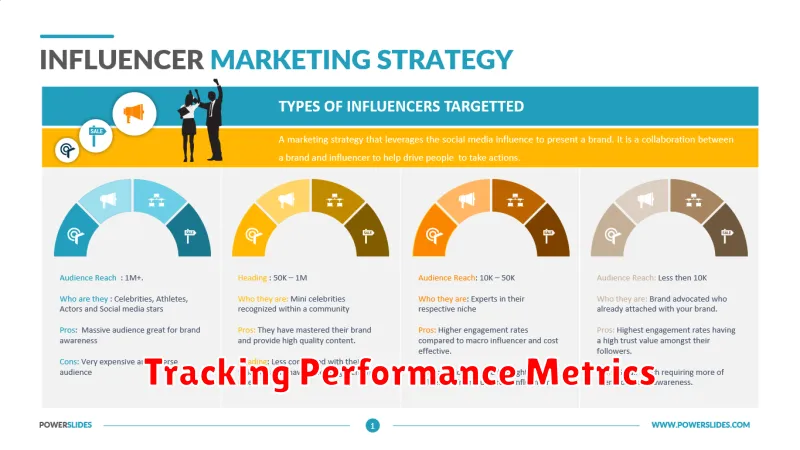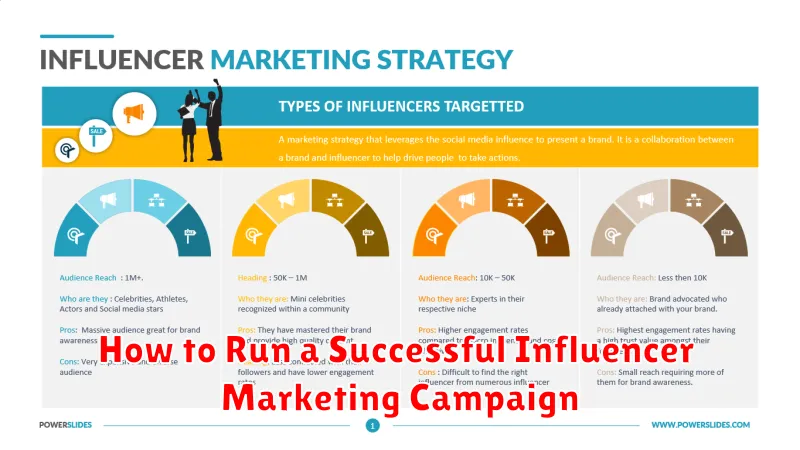In today’s digital landscape, influencer marketing has become an indispensable tool for businesses seeking to expand their reach and engage with target audiences. A well-executed influencer marketing campaign can significantly boost brand awareness, drive sales, and build lasting customer loyalty. This article will provide a comprehensive guide on how to develop and execute a successful influencer marketing campaign, from defining your objectives and identifying the right influencers to measuring your results and optimizing your strategy. Understanding the nuances of influencer marketing is crucial for maximizing your return on investment and achieving your marketing goals.
Whether you are new to influencer marketing or seeking to refine your existing strategies, this guide will equip you with the knowledge and practical steps necessary to run a successful campaign. We will explore key aspects of influencer marketing, including strategies for influencer selection, campaign management, and performance measurement. Learn how to leverage the power of influencer collaborations to create impactful campaigns that resonate with your target audience and deliver measurable results. From establishing clear campaign goals to navigating the complexities of influencer partnerships, this article will provide you with the essential tools for success in the dynamic world of influencer marketing.
Defining Campaign Goals and Budget
Before launching any influencer marketing campaign, it is crucial to define clear and measurable goals. What do you hope to achieve with this campaign? Common goals include increasing brand awareness, driving website traffic, generating leads, or boosting sales. Clearly defined goals will guide your strategy and allow you to measure the success of your campaign.
Once you have established your goals, the next step is to determine your budget. How much are you willing to invest in this campaign? Consider influencer fees, content creation costs, and any platform advertising spend. A well-defined budget ensures you allocate resources effectively and stay within your financial limits. Be realistic about your budget and its potential impact on campaign reach.
Setting realistic and measurable goals aligned with a defined budget is the foundation of a successful influencer marketing campaign. This groundwork enables informed decisions throughout the campaign process.
Finding the Right Influencers for Your Brand

Identifying the right influencers is crucial for a successful campaign. It’s not just about follower count; it’s about finding influencers who align with your brand values, target audience, and campaign goals.
Consider these factors when selecting influencers:
- Relevance: Does the influencer’s content align with your industry and brand messaging?
- Engagement: Look beyond follower count. Analyze their engagement rate (likes, comments, shares) to gauge their audience’s responsiveness.
- Authenticity: Choose influencers who genuinely connect with their audience and whose values resonate with your brand.
- Reach: While not the sole factor, reach is important for ensuring your message gets seen by your target demographic.
Utilize influencer marketing platforms and social media analytics tools to research potential influencers. Look at their past collaborations and the performance of those campaigns. A thorough vetting process will help you find the perfect partners to represent your brand.
Setting Clear Expectations and Deliverables
A crucial step in any successful influencer marketing campaign is setting clear expectations and deliverables upfront. This prevents misunderstandings and ensures both the brand and the influencer are on the same page.
Begin by clearly defining the campaign goals. Are you aiming for increased brand awareness, website traffic, or product sales? Communicate these objectives clearly to the influencer.
Next, outline the specific deliverables you expect from the influencer. This might include a certain number of social media posts, stories, or videos. Specify the content format, posting schedule, and any required keywords or hashtags.
It’s also important to discuss performance metrics. How will you measure the success of the campaign? Agree on key performance indicators (KPIs) like engagement rate, reach, or conversions.
Creating Engaging Campaign Content
Engaging content is the cornerstone of any successful influencer marketing campaign. It’s crucial to develop content that resonates with both the influencer’s audience and your target demographic. This requires a collaborative approach, leveraging the influencer’s expertise and understanding of their followers.
Start by clearly defining your campaign goals. What message do you want to convey? What action do you want the audience to take? These questions will guide the content creation process.
Authenticity is key. The content should align with the influencer’s existing style and values. Forced or inauthentic content will be easily detected by their audience and can damage the influencer’s credibility.
Consider different content formats. While sponsored posts are common, explore other options such as stories, reels, live streams, or even longer-form videos. Diversifying content can broaden your reach and maintain audience interest.
A clear call to action is essential. Tell the audience what you want them to do, whether it’s visiting your website, using a specific hashtag, or making a purchase.
Tracking Performance Metrics

Tracking the right metrics is crucial for evaluating the success of your influencer marketing campaign. It allows you to understand what’s working, what’s not, and how to optimize for future campaigns.
Key performance indicators (KPIs) will vary depending on your campaign goals. Some common metrics include:
- Reach: How many unique users saw the influencer’s content.
- Impressions: The total number of times the content was displayed.
- Engagement: Likes, comments, shares, and saves.
- Website Traffic: Clicks to your website from the influencer’s content.
- Conversions: Sales, sign-ups, or other desired actions resulting from the campaign.
Establish clear benchmarks before the campaign begins to accurately measure success. Regularly monitor these KPIs throughout the campaign to identify trends and make adjustments as needed.
Building Long-Term Relationships
Influencer marketing isn’t just about one-off campaigns. Cultivating long-term relationships with influencers can yield significant benefits.
Repeated collaborations build trust with both the influencer’s audience and the influencer themselves. This trust translates into more authentic and effective promotion of your brand.
Long-term partnerships also offer greater flexibility. You can adapt your campaigns to evolving market trends and leverage the influencer’s insights for future product development.
Consider these strategies for fostering lasting relationships:
- Open Communication: Maintain consistent contact and be responsive to their needs.
- Mutual Benefit: Ensure the partnership is valuable for both parties. Offer fair compensation and creative freedom.
- Beyond Business: Show genuine interest in the influencer’s work and personal brand.
Avoiding Common Mistakes in Influencer Marketing
Influencer marketing, when executed effectively, can significantly boost brand awareness and drive sales. However, common pitfalls can hinder campaign success. One crucial mistake is failing to carefully select influencers who align with your brand values and target audience. Choosing an influencer solely based on follower count can lead to a mismatch and ineffective messaging.
Another common error is neglecting to establish clear campaign goals and deliverables. Without specific, measurable objectives, it becomes difficult to track progress and assess ROI. Clearly define your desired outcomes, whether it’s increased website traffic, lead generation, or brand mentions.
Finally, neglecting to measure campaign performance is a critical oversight. Utilize analytics platforms to monitor key metrics such as engagement, reach, and conversions. This data provides valuable insights into campaign effectiveness and informs future strategies.

